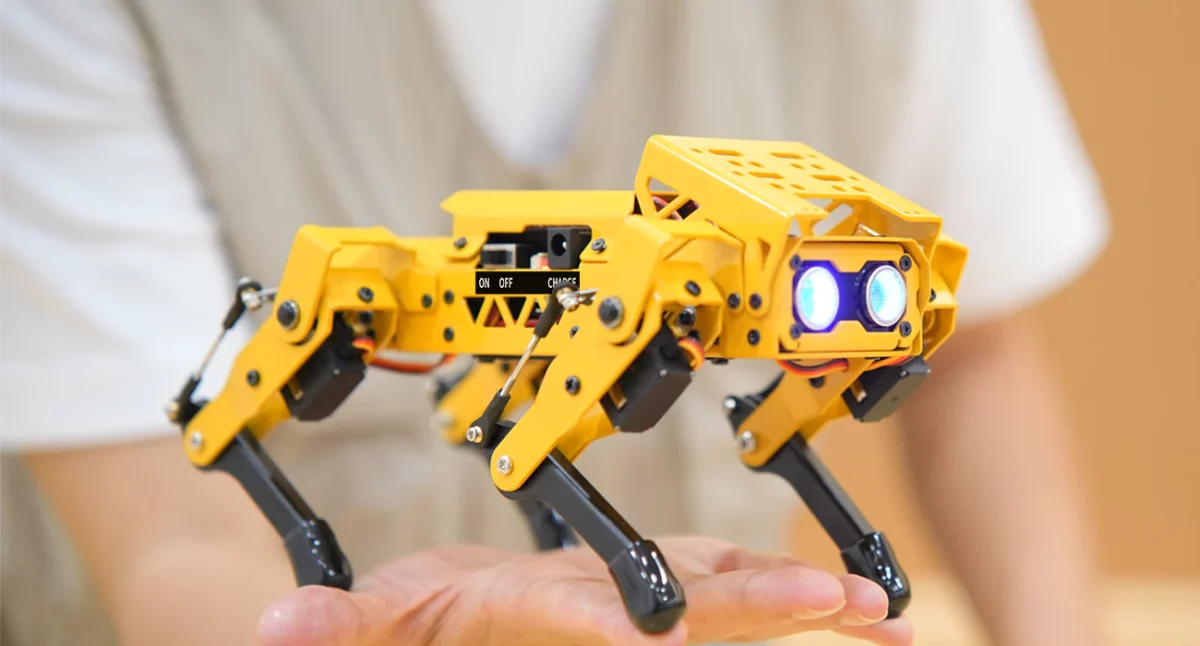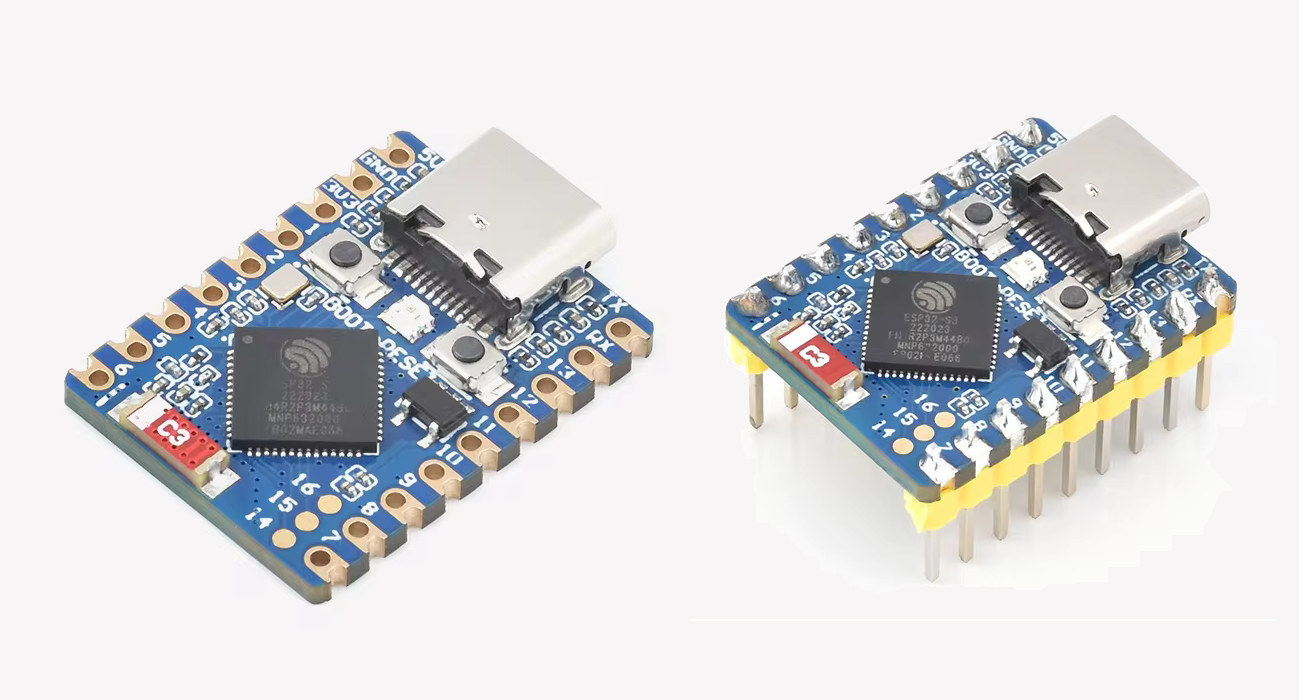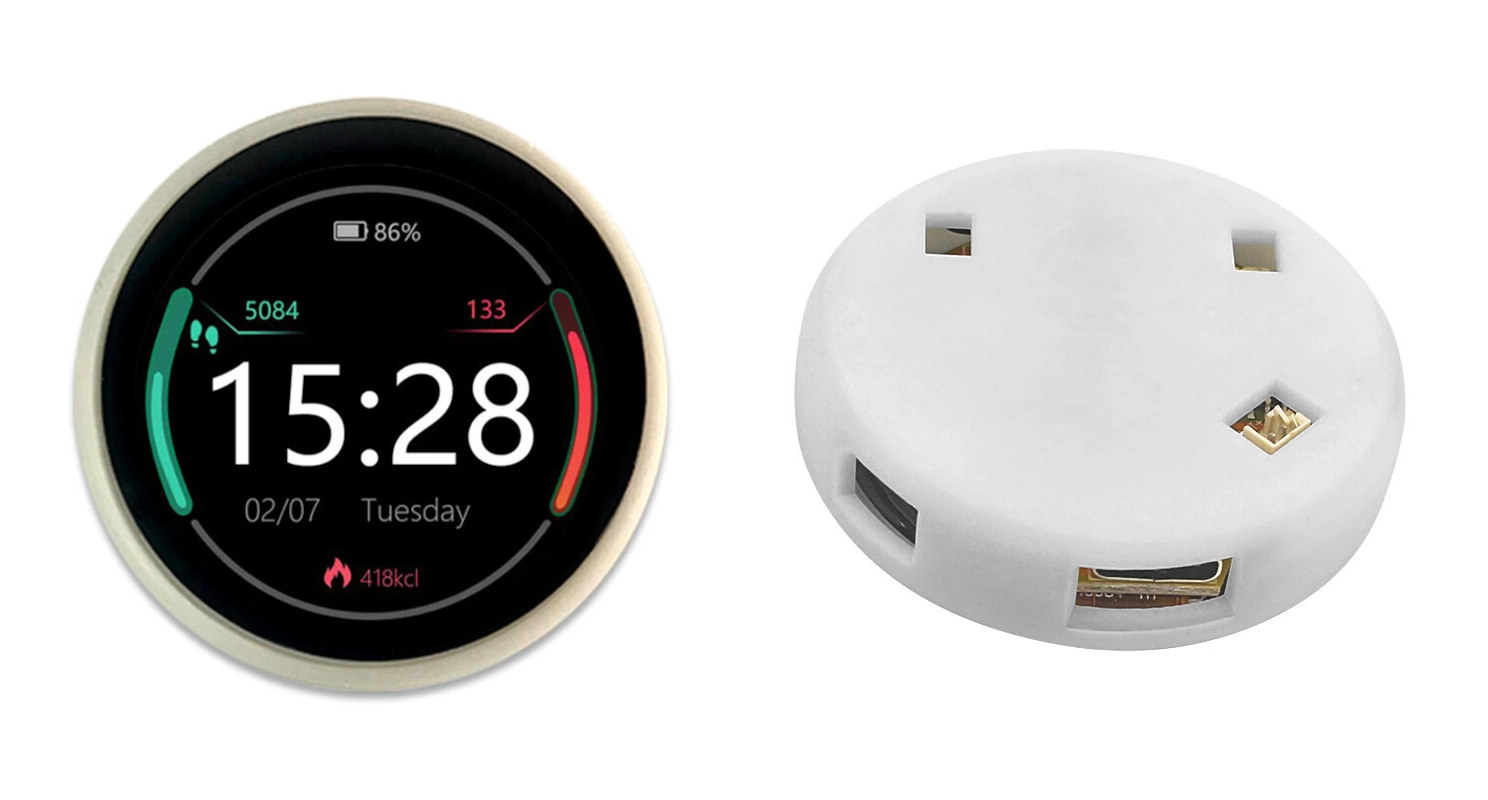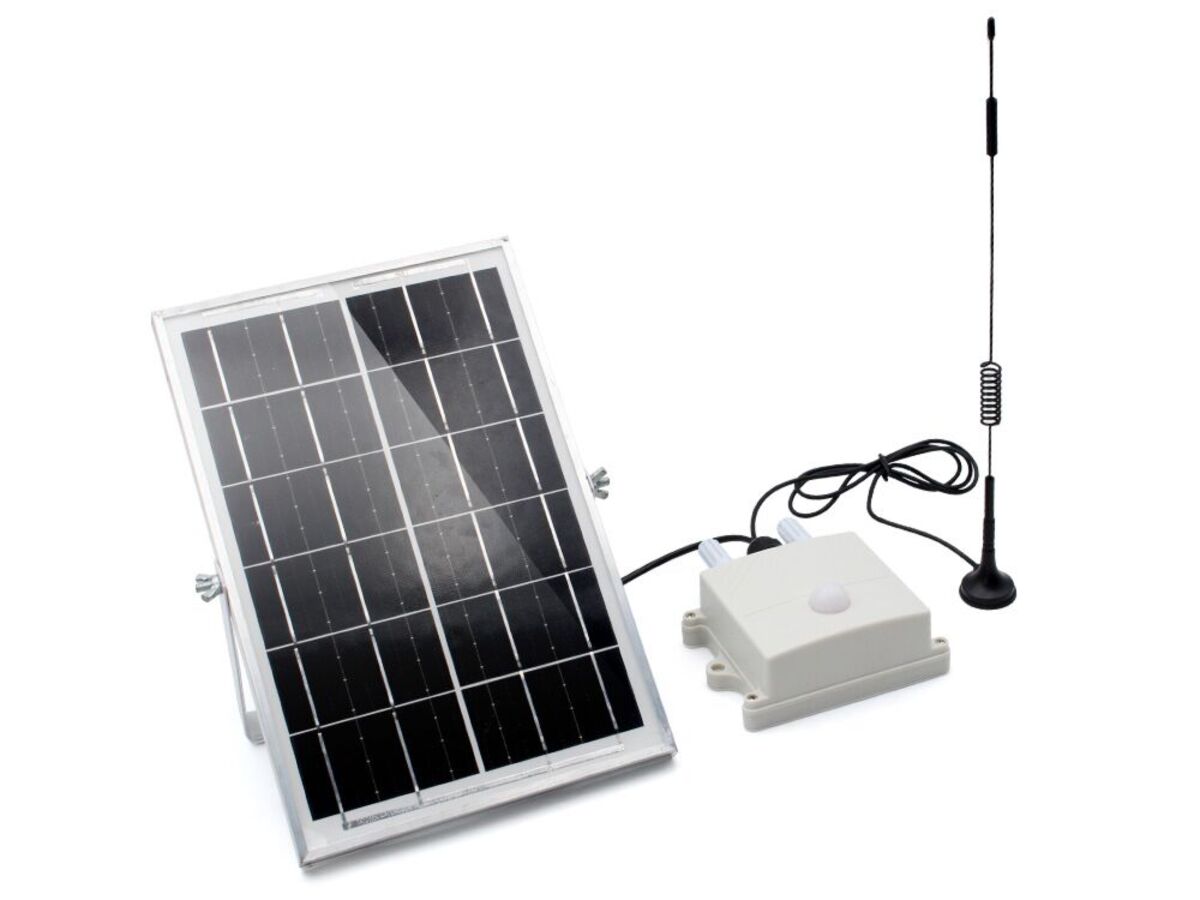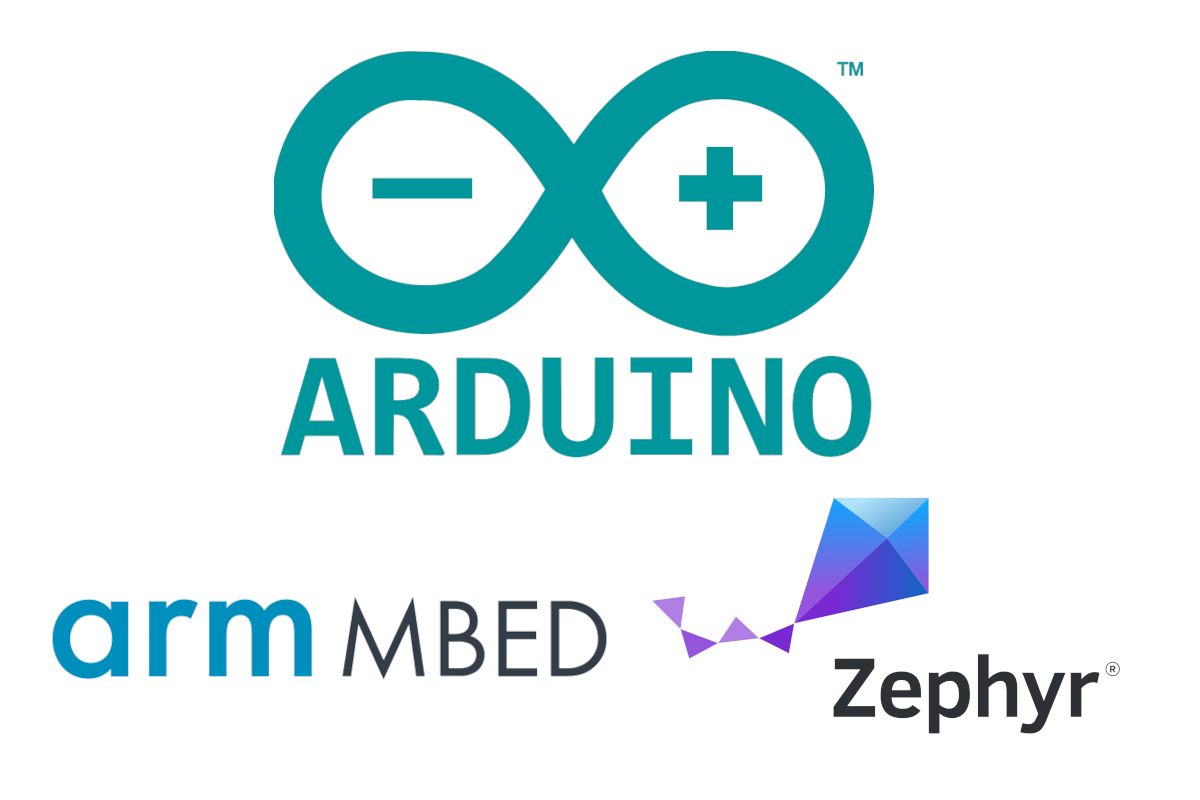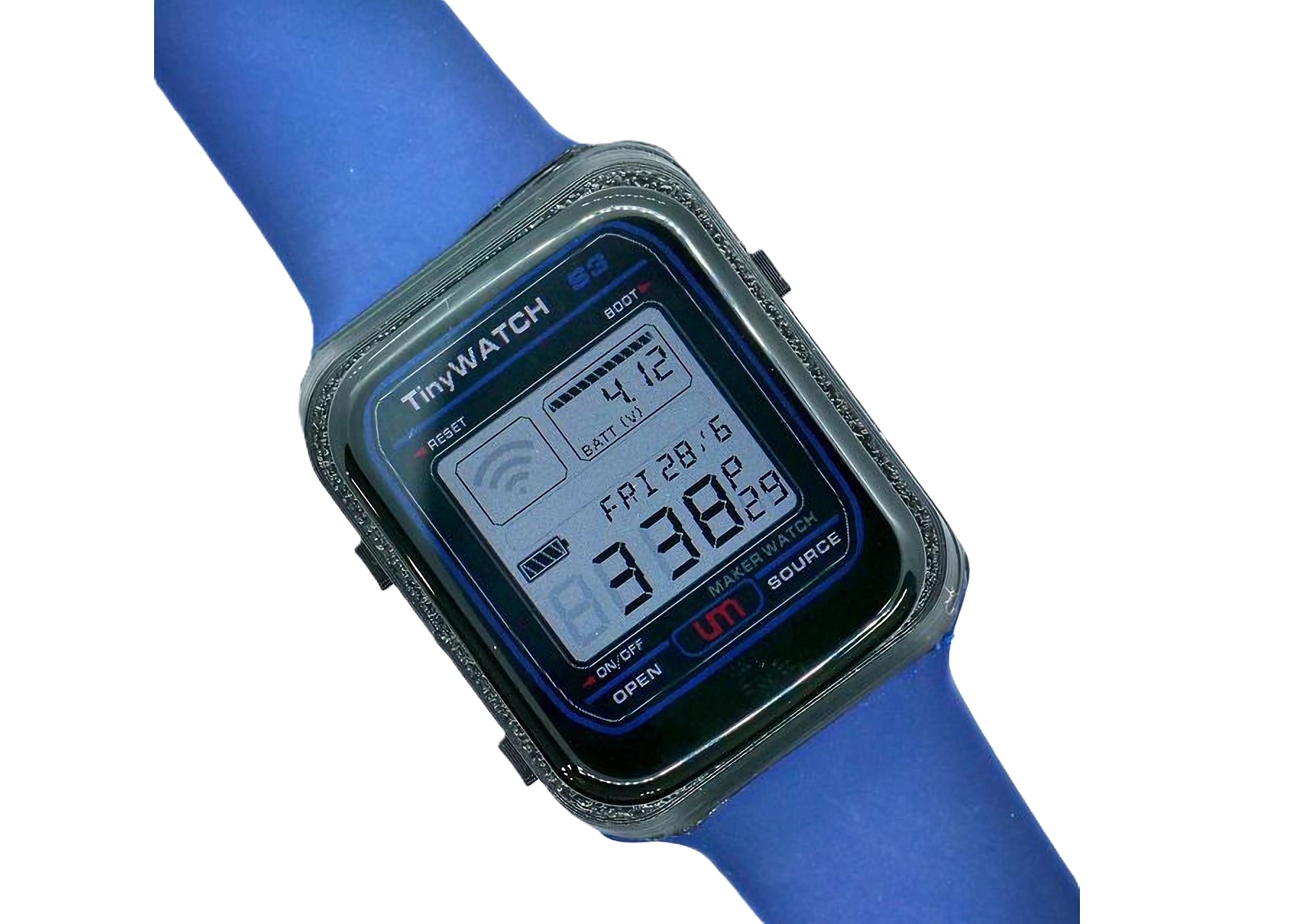Hiwonder’s MechDog is a compact AI robot dog powered by an ESP32-S3 controller that drives eight high-speed coreless servos. It features built-in inverse kinematics for precise and agile movements and has ports for various I2C sensors such as ultrasonic and IMU sensors. The robot is equipped with a durable aluminum alloy frame and a removable 7.4V 1,500mAh lithium battery for power. MechDog integrates with the ESP32-S3 AI vision module, supporting dual-mode network communication either AP Hotspot Direct Connection Mode or STA LAN Mode so that users can access a designated URL webpage via an app or PC for real-time monitoring using a high-definition camera. Also, this robot dog supports various sensor modules, including a touch sensor, light sensor, dot matrix display, and programmable MP3 module, allowing for secondary development and expansion, offering extensive creative possibilities. Previously, we wrote about the Waveshare UGV AI Rover, which features a 2mm thick aluminum […]
Waveshare ESP32-S3-Zero is a tiny WiFi and BLE IoT module with a USB-C port, up to 32 GPIOs
Waveshare ESP32-S3-Zero is a tiny (23.5×18 mm) module based on Espressif ESP32-S3 WiFi 4 and BLE microcontroller with two rows of nine through holes plus 16 pads for GPIOs, a USB-C port for power and programming, Boot and Reset buttons, and a ceramic antenna. It reminds me of the Seeed Studio’s XIAO ESP32S3 module with an even smaller 21 x 17.5mm design, but the ESP32-S3-Zero offers more GPIOs, an RGB LED, and a built-in ceramic antenna instead of a u.FL connector for an external antenna. Waveshare ESP32-S3-Zero specifications: Wireless MCU – Espressif Systems ESP32-FH4R2 CPU – dual-core Tensilica LX7 microcontroller @ 240 MHz Memory – 512KB SRAM, 2MB PSRAM Storage – 4MB flash Wireless – Wi-Fi 4 & Bluetooth 5.0 dual-mode (classic + BLE) connectivity Antenna – 2.4 GHz ceramic antenna USB – USB Type-C port for power and programming Expansion I/Os 2x 9-pin 2.54mm pitch headers and castellated holes […]
SparkFun Thing Plus – NORA-W306 – A dual-band Wi-Fi 4 and BLE 5.3 IoT board
SparkFun Thing Plus – NORA-W306, is a dual-core, dual-band WiFi 4 and BLE 5.3 microcontroller board in the AdaFruit Feather form factor based on the u-box NORA-W306 module and targeted at low-power wireless applications. The u-blox module integrates the Realtek RTL8720DF chip, a dual-core ARM Cortex-M33 and Cortex-M23 microcontroller with dual-band Wi-Fi (2.4GHz and 5GHz) and Bluetooth 5.3 Low Energy. It offers up to 4MB of encrypted flash and has an onboard PCB antenna. It’s very similar to the RealTek RTL8720DN we covered a few times in the past, but comes with embedded flash. The SparkFun Thing Plus – NORA-W306 board features a USB-C connector for programming, data, and power. The USB data lines are protected against electrostatic discharge and are connected to a CP2102N USB-to-serial converter for uploading code or serial. This board includes a 2-pin JST-style connector for a LiPo battery, a single-cell charger, and a LiPo fuel […]
Arduino and LVGL-compatible ESP32-C3 board features a 1.28-inch round touchscreen display fully housed in a case
The ESP32-2424S012 is an ESP32-C3 WiFi and BLE development board with a 1.28-inch round touchscreen color display that is fully housed in a black or white plastic enclosure and suitable for Arduino and LVGL library. As we’ll see further below some have also used it with Tasmota and ESPHome firmware. We previously covered several tiny ESP32-S3/ESP32-C3 boards with a round display such as the LILYGO T-RGB ESP32-S3 board, Makerfabs “ESP32-S3 Round SPI TFT with Touch 1.28″, SB Components’ Dual Roundy, but they either don’t come with a case at all, or only the front is covered, but the bottom is laid bare. The ESP32-2424S012 is quite similar, but it can be purchased with a case that covers both the front and back with some openings for expansion connectors. ESP32-2424S012 board specifications: Wireless module – Espressif Systems ESP32-C3-MINI-1U module SoC – ESP32-C3 RISC-V microcontroller @ 160 MHz with 400 KB SRAM, 2.4 […]
NBIOT/LTE-M Air Monitor – A solar-powered ESP32-S3 multi-sensor board with SIM7080G NB-IoT & LTE-M modem
The NBIOT/LTE-M Air Monitor is a solar-powered device that utilizes a combination of ESP32-S3 and SIM7080G modules for remote environmental monitoring. It monitors and transmits environmental parameters such as temperature, humidity, CO2, TVOC, and light intensity using low-power wide-area network (LPWAN) technology ensuring efficient power consumption, durability, and reliable data transmission. Previously we have written about similar environment monitor devices like the Airlytix ES1, Sonoff SC WiFi, V-Air Monitro, and devices like Arduino MKR IoT Carrier Rev2, Radair mini gateway, and Nicla Sense ME designed for environment monitoring applications. Feel free to check those out if you are interested in this type of product. NBIOT/LTE-M Air Monitor specification Wireless Module – ESP32-S3-WROOM-1-N16R8 Espressif Systems ESP32-S3R8 – Dual-core Tensilica LX7 @ up to 240 MHz with vector instructions for AI acceleration, 512KB RAM, 8MB PSRAM Storage – 16 MB flash Wireless – 2.4 GHz WiFi 4 and Bluetooth PCB antenna Cellular connectivity Module – SIMCom SIM7080G LTE Cat […]
LILYGO T-ETH-ELite ESP32-S3 Ethernet PoE board supports stackable LoRaWAN and Cellular expansion modules
LILYGO T-ETH-Elite is an ESP32-S3-powered IoT board with an Ethernet RJ45 port supporting PoE and a 40-pin GPIO header for stackable shields that offer support for LoRaWAN, 2G, NB-IoT, or/and 4G LTE cellular connectivity. The ESP32-S3 board allows users to build gateways with Ethernet, WiFi, Bluetooth, GNSS, LoRaWAN, and Cellular (2G, NB-IoT, 4G LTE) connectivity, and they can easily switch cellular modules to match specific requirements. LILYGO T-ETH-Elite specifications: Wireless module – Espressif ESP32-S3-WROOM-1 MCU – ESP32-S3R8 dual-core Tensilica LX7 up to 240 MHz with 512KB SRAM, up to 8MB PSRAM Storage – 16MB flash Connectivity – WiFi 4 and Bluetooth LE 5 PCB antenna Storage – MicroSD card slot Networking – 10/100Mbps Ethernet RJ45 port via W5500 SPI to Ethernet chip USB – USB Type-C port for power and programming Expansion – 40-pin (mostly) Raspberry Pi-compatible GPIO header for shields (up to 23x GPIO, USB 2.0, UART, 5V, 3.3V, […]
Arduino to switch from Arm Mbed to Zephyr RTOS
Following Arm’s decision to stop supporting Mbed from July 2026 onwards, Arduino has now decided to use Zephyr RTOS instead of Arm Mbed for Arduino boards that rely on the latter including Arduino GIGA, Arduino Nano 33 BLE, Arduino Nano RP2040 Connect, as well as Arduino PRO boards/solutions such as the Portenta, Nicla, and Opta families. Note that Arduino UNO, MKR, and Nano families are not impacted by the change since their Arduino Core implementation does not rely on Mbed. The change is not going to happen overnight as software development takes time, and Arduino plans to release the first beta based on ZephyrOS by the end of 2024. and a rollout for various boards starting in 2025 long before Arm Mbed is phased out for good. Arduino is not new to the Zephyr project as the company became a Silver member last year, and they were aware that Arm […]
TinyWatch S3 is an open-source, customizable smartwatch powered by ESP32-S3 SoC
The TinyWatch S3 is an ESP32-S3 development board in a smartwatch form factor from Seon Rozenblum, also known as Unexpected Maker. It is powered by the ESP32-S3 wireless microcontroller with 8MB quad SPI flash storage and 2MB of additional QSPI PSRAM. It features a 240 x 280 LCD with capacitive touch (via a CST816T module) and several onboard sensors including a 6-axis inertial measurement unit, a magnetometer, and a MEMS microphone. It has a USB-C port for power, programming, and charging a connected LiPo battery (250mAh or 500mAh). While the product’s firmware is still in active development, it is usable as a watch and even a daily driver. The TinyWatch S3 is described as a “wrist-wearable ESP32-S3 development board” but lacks pin headers and is not breadboard compatible. The hardware is open-source but the product is mostly useful for firmware development, testing, and other general projects. The firmware is being […]


